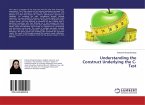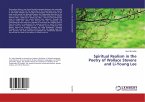The oldest and strongest emotion of mankind is fear, and the oldest and strongest kind of fear is fear of the unknown . With these words Howard Philips Lovecraft begins The Supernatural Horror in Literature . I contend that the importance Lovecraft attaches to the unknown in this critical essay on horror fiction or weird fiction, as Lovecraft termed it is reflected in his own works, as well. This thesis shows that the unknown actually forms the core of a narrative technique which we can identify in most of Lovecraft s works. Through close readings of three of his most famous texts, The Call of Cthulhu , The Shadow over Innsmouth and The Case of Charles Dexter Ward , this thesis analyzes the central role that unknowns play in them. It highlights how unknowns are created, maintained and resolved in the course of the narrative. The analyses also show how these unknowns affect the narrative flow and how the reader is affected by their presence. Ultimately, this thesis describes a narrative technique or model which is centered on the unknown and which is commonly found in Lovecraft s texts.








